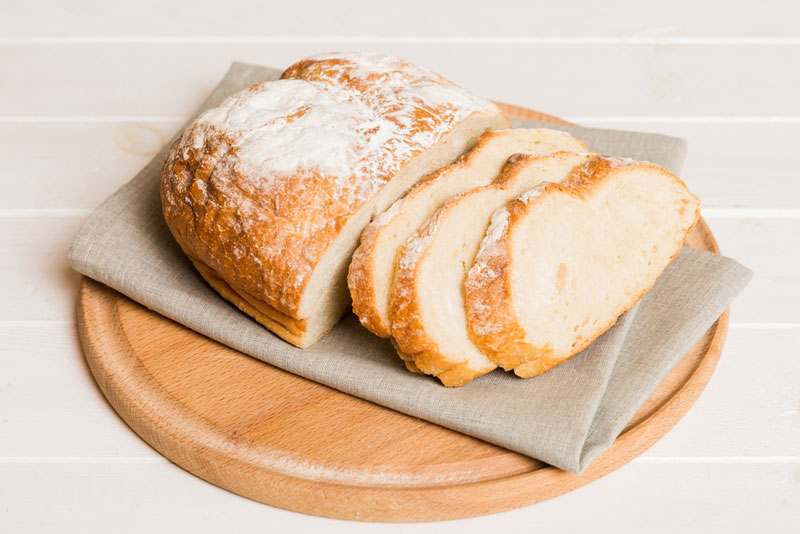Have you ever wondered if your furry friend, your adorable cat, can chow down on that leftover bread? The answer is yes, cats can eat bread, but not all types are suitable for them. While it might not be the best snack option for our feline companions, it’s essential to know the dos and don’ts of sharing this human food with our pets.
Bread is a human staple and many of us enjoy it daily, whether it’s in a sandwich, toast, or a delicious bread roll. Cats, being curious creatures, sometimes want to nibble on whatever we are eating. So asking ourselves if our kitty can munch on that bread is perfectly valid! As we continue to explore this topic, we’ll discover the effects of bread on our cat’s health and some fun facts along the way.
Stick around, because we’ll take a fun, deep look into the world of cats and their culinary adventures with bread. Who knows? We may just uncover some surprising insights together!
Can Cats Eat Bread?

To give you a clear answer, cats can eat bread in moderation. While cats are carnivores, which means they thrive on a diet primarily made up of meat, they can handle small amounts of bread. Usually, bread doesn’t offer any nutritional value for cats. It’s a bit like giving kids chocolate! They love it when they get it, but it doesn’t help them grow strong or healthy. However, a tiny bite of plain bread is not likely to hurt them, as long as we follow some important guidelines.
Let’s look at the components of bread. Most types of bread are made from flour, water, salt, and yeast. None of these ingredients provide necessary nutrients that our cats need to thrive, such as protein and taurine. It’s easy for us humans to enjoy bread, as it provides energy through carbohydrates, but our cat friends have different requirements. Over time, regular consumption of bread could lead to health issues due to the lack of proper nutrition. So while it’s fine to share a crumb or two with your cat as a treat, we must keep it limited.
How Much Bread Can Cats Eat?
When it comes to sharing bread with our cats, moderation truly is the magic word. We love to spoil our fur babies, but we must remain cautious about how much we give them. A small nibble or half a piece of bread can be manageable and harmless for cats, but let’s stick to that amount. Remember, providing too much could throw off their diet and lead to weight gain or digestive issues over time.
Since every cat is unique, it’s important to consider their individual health conditions, activity levels, and dietary needs. A slightly larger, more active cat may handle a little more than a senior cat who’s not as lively. If your cat has any health issues, especially diabetes, it’s best to avoid sharing bread altogether. A general rule of thumb is to treat bread as an occasional snack rather than a regular feature of mealtime. Think of it as more of a curious exploration than an essential part of their diet!
Also, we should never give our kitties bread that’s packed with toppings. Bread enriched with garlic, onion, or any herbs could be toxic to cats. Keep the bread simple and plain. The safest bread options are those without any fancy flavorings or additives. Your kitty may be looking at you with those adorable eyes, begging for more, but let’s stay strong and limit it to just a few bites. This way, we protect their health while still getting to share a moment together.
Each cat’s response to bread can also vary. Some might sniff it and walk away, while others may think it’s the best thing since catnip! Monitoring their reaction is key. If you notice any weird behaviors or tummy troubles after they’ve had a taste, that’s your signal to stop offering bread entirely. Just remember, your kitty’s purring happiness doesn’t have to come from bread alone.
Benefits Of Bread To Cats
1. Bonding Moments: One benefit of sharing bread occasionally with our feline friends is creating bonding moments. Sharing food can help form connections, making our cats feel included and loved. Imagine a cozy night in with your cat sitting on your lap while you munch on toast. When you give them a little piece, it’s like saying, ‘Hey buddy, you are part of the family!’
2. Explore: It can also be a fun way for cats to explore different tastes and textures. Cats, being naturally curious, may enjoy the new experience of trying bread. It’s like introducing them to a whole new world of flavors, showcasing our adventures through food!
3. Enjoyable Feature: Some cats may enjoy eating small pieces of bread as a treat. The texture might be an enjoyable feature for them to gnaw at, adding some excitement to their treats. Just imagine a cat enjoying their special snack as if it’s a gourmet meal!
4. Transition: Another benefit is that it can be a way to help them with transition. For example, if a cat is switching from one food to another, a little plain bread might serve as a mild distraction during mealtime that they’re still getting used to new flavors or textures. Slowly easing them into new tastes might help them feel more comfortable.
5. Help With Furballs: Finally, small amounts of bread can sometimes help with furballs! While cats primarily need protein, fiber can assist with furball issues. Again, this should be a treat and not a staple in their diet, but a little bread might support their digestion if they happen to have furball problems.
Dangers Of Feeding Bread To Cats
However, just as we mentioned some benefits, we also need to be aware of potential risks involved in sharing bread with our cats. It is not all cuddles and fun when it comes to this topic.
Firstly, an important consideration is the potential for digestive issues. Cats can sometimes experience stomach upset or trouble digesting foods that are foreign to them, such as bread. If they consume too much, they may find themselves facing bloating, gas, or even diarrhea. Digestive problems are not pleasant for humans, and they’re even less so for our furry friends!
Moreover, cat obesity is a serious health concern that arises from feeding our pets too many treats and human foods. While sharing a piece of bread occasionally may not seem harmful, over time, it could lead to weight gain if it becomes a frequent part of their diet. Cats primarily need protein, and when we substitute too many treats for their nutritious cat food, it’s easy to mess up the balance they need for good health.
Some cats also have allergies or sensitivities to wheat, which is a common ingredient found in many breads. If they have a wheat allergy, even the smallest crumb could cause skinirritation or gastrointestinal upset. Pay close attention to any changes in their behavior after giving them bread, and consult with your veterinarian if you’re unsure or notice any adverse reactions.
In addition to allergies, we must be cautious about offering bread with harmful additives or toppings. Breads seasoned with garlic or onion are toxic to cats, leading to serious health issues if consumed. Make sure you’re only giving them plain, safe options.
In summary, while it’s okay to share small bits of bread with our feline friends, we must tread lightly to ensure their health and happiness.
Substitute Of Bread For Cats
1. Cooked Lean Meat: Instead of bread, let’s consider offering some cooked lean meat. Cats are obligate carnivores, meaning their primary diet should consist of meat. Lean chicken, turkey, or even fish can be a fantastic treat; these foods offer the protein they need without the complications bread might bring.
2. Commercial Cat Treats: Another excellent substitute for a treat is commercial cat treats, which are specially formulated for feline health. These treats allow us to spoil our cats without the risks that come from sharing human food. We can find an endless array of flavors and types, ranging from crunchy to soft, to keep our pets happy!
3. Vegetables: This can also make a fantastic addition to our cat’s snack time. Cats are attracted to leafy greens and veggies like peas or pumpkin. They can provide some fiber and variety without the complications of bread. Just make sure to prepare them properly – cooking is often preferable as raw veggies can be hard for kitties to digest.
4. Hydration: As far as hydration goes, offering wet food is a great way to add variety. It can keep our fur babies happy and hydrated through every delicious bite. It’s always important for cats to have both dry and wet food in their diet.
5. Catnip: Lastly, we could always try catnip! While it’s not a direct food substitute, catnip can create pure joy. Catnip offers entertainment, and we can have a blast watching our cats go wild over it! Just remember to sit back and enjoy the show while ensuring any food we provide is actually nutritious.
Can Cats Eat Bread? Frequently Asked Questions
Is Bread Healthy For Cats?
Not really. While small amounts of bread won’t poison your cat, it’s not a crucial part of their diet, and it lacks the essential nutrients they need for long-term health.
Can All Cats Eat Bread?
Most cats can eat a little bread, but some may have allergies or sensitivities. It’s vital to watch for any adverse reactions.
What Types Of Bread Are Safe For Cats?
The simplest options would be plain white or whole wheat bread without any added ingredients like garlic or onion. Common sense always applies!
How Much Bread Can I Give My Cat?
A small piece or a nibble now and then is perfectly fine, but let’s keep it to an occasional treat, not a routine meal.
Can Bread Replace Cat Food?
Absolutely not! Bread lacks the nutrients that cats require and should never be a substitute for the balanced diet cat food provides.
Final Thoughts
In conclusion, while sharing a small piece of bread is generally safe for our cats, it should remain a rare treat and not a staple in their diet. We’ve looked at the benefits and risks involved, and we must make healthy choices for our furry friends. Throughout it all, our knowledge is empowering as we strive to keep our pets safe and happy!
As pet lovers, there is always something new to learn about. If you’re interested in exploring other fascinating topics, check out this informative article on Huston Veterinary’s Blog, or learn more about foods to avoid with Can Cats Eat Cheese?. We also have information on what Can Cats Eat Eggs? to keep your furry friends both happy and healthy!


